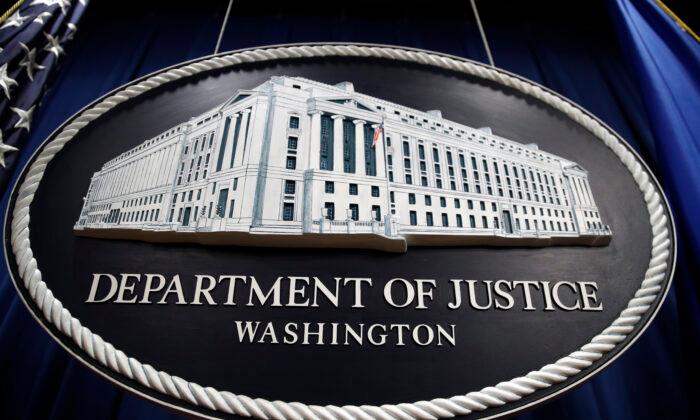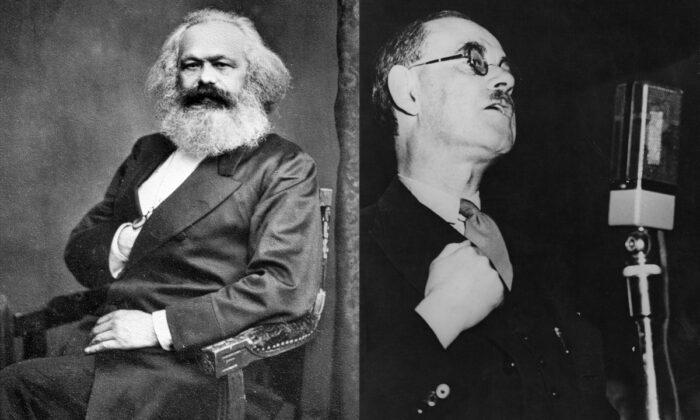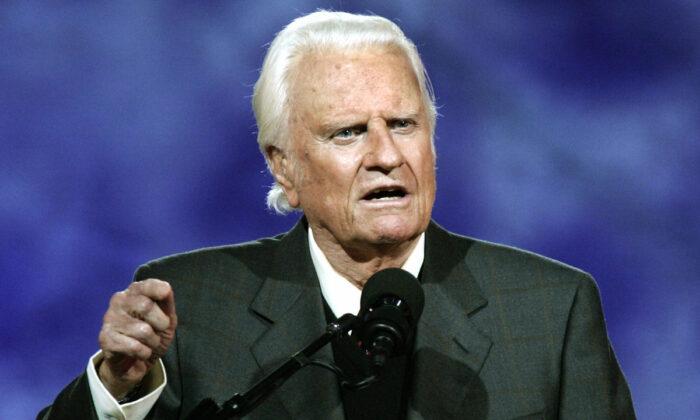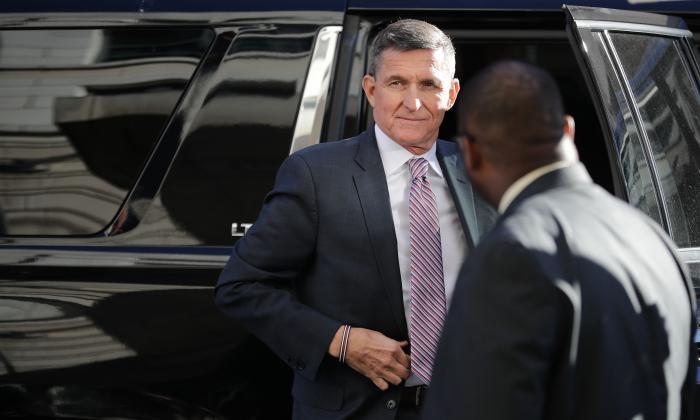On this day in 1933, President Franklin D. Roosevelt extended “normal diplomatic relations” to the communist dictatorship under Joseph Stalin in Moscow.
In exchange for a page of Soviet concessions signed by Foreign Minister Maxim Litvinov (who, with Prohibition-era beer on his breath, returned to the Soviet Embassy “all smiles ... and said, ‘Well, it’s all in the bag; we have it’"), the U.S. government found itself derailed onto a strange, new track through an unfamiliar, soon monotonous, land of endless apologetics.
The crux of the U.S.–USSR agreement rested on a series of promises, accepted and signed by Litvinov, that listed very specifically what the Soviet Union would not do “in the United States, its territories or possessions”: Namely, it would not attempt to subvert or overthrow the U.S. system.
The declaration “scrupulously” stated the USSR would refrain and restrain all persons and all organizations, under its direct or indirect control, from taking any act, overt or covert, aimed at the overthrow or preparation for the overthrow of the United States.
It further specifically stipulated that the Soviet government wouldn’t form or support groups inside the United States—such as the Soviet-supported Communist Party USA, myriad “front groups,” the Soviet-directed underground espionage networks spies that Elizabeth Bentley and Whittaker Chambers later broke with, or the Communist Party USA–Comintern group on the West Coast that Roosevelt-aide Harry Hopkins found out J. Edgar Hoover was bugging (and knowingly told the Soviets).
The agreement, in other words, was a bunch of lies.
As our most respected and beloved leaders increasingly sought refuge in this world of pretend, they led the nation on a disastrous retreat from reality from which we have never, ever returned. In our retreat, we left morality behind, undefended.
These U.S. leaders understood that the Bolsheviks’ seizure of the government by force, their reign of blood, and their pledge to conspire against other governments made the “mutual confidence” required for diplomatic relations impossible. Hoover, however, doesn’t explain the shift in thinking between 1918 and 1933.
A Question
In his very first speech on his very first trip to the United States in 1975, 56-year-old Alexander Solzhenitsyn asked the question he had wanted to ask America most of his adult life. The renowned author of “The Gulag Archipelago” set it up by comparing the historic U.S. aversion to an alliance with czarist Russia to Roosevelt’s rush to recognize a far more repressive and infinitely more violent Bolshevik Russia in 1933.Pre-revolutionary executions by the czarist government came to about 17 per year, Solzhenitsyn said, while, as a point of comparison, the Spanish Inquisition at its height destroyed 10 people per month. In the revolutionary years of 1918 and 1919, he continued, the Cheka executed without trial more than a thousand per month. At the height of Stalin’s terror in 1937–38, tens of thousands of people were shot per month.
Solzhenitsyn put it this way: “Here are the figures: 17 a year, 10 a month, more than 1,000 a month, more than 40,000 a month! Thus, that which had made it difficult for the democratic West to form an alliance with pre-revolutionary Russia had, by 1941, grown to such an extent, yet still did not prevent the entire united democracies of the world—England, France, the United States, Canada, and other small countries—from entering into a military alliance with the Soviet Union. How is this to be explained? How can we understand it?”
U.S. Presidents Wilson, Harding, Coolidge, and Hoover all rejected relations with the Bolshevik regime. This would seem to mark these men as belonging to the earlier era of Alfred Dreyfus, when, as historian Robert Conquest notes, “the conscience of the civilized world could be aroused by the false condemnation to imprisonment of a single French captain for a crime which had actually been committed, though not by him.”
A generation or two later, the conscience of the civilized world couldn’t be aroused, period, not by the false condemnation of one nor the false condemnation of thousands, tens of thousands, or hundreds of thousands, as Conquest explains: “The Soviet equivalent of the Dreyfus case involved the execution of thousands of officers, from Marshals and Admirals down, on charges which were totally imaginary.”
Defying Reason
The West’s decision to recognize the USSR—and its determination to keep recognizing it, no matter how much lying and acquiescence to the betrayal that entailed—did more to transform us than any single act before or since.To be sure, there was something new in the way that recognition forever after reordered the priorities and actions of our republic, something that marked the beginning of a very new era.
The fact is, the implications of normalizing relations with the thoroughly abnormal USSR didn’t just reward and legitimize a regime of rampantly metastasizing criminality. Because the communist regime was so openly and ideologically dedicated to our destruction, the act of recognition defied reason and the demands of self-preservation.
Recognition and all that came with it, including alliance, would soon become the enemy of reason and self-preservation. In this way, as historian Dennis J. Dunn points out, we see a double standard in U.S. foreign policy evolve, and, I would add, in American thinking more generally. It was here that we abandoned the lodestars of good and evil, the clarity of black and white. Closing our eyes, we dove head first into a weltering morass of exquisitely enervating and agonizing grays.
This is the journey that forced open our psyches to increasingly expansive experiments in moral relativism. Only a very few refused to go; only a very few saw the sin.
There is something poignantly allegorical in Solzhenitsyn’s recollection of being a young Red Army soldier flummoxed by what he and his comrades heard as Roosevelt’s disastrous misreading of Stalin at around the time of the Tehran Conference, which brought together Roosevelt, Churchill, and Stalin in November 1943. As Solzhenitsyn and comrades marched on the Elbe, he said, they hoped to “meet the Americans and tell them.”
He added, “Just before that happened, I was taken off to prison and my meeting didn’t take place.” Just before that happened, just before he was going to tell his U.S. compatriots the truth about Stalin, and about the Soviet Union, the 26-year-old was arrested by the People’s Commissariat for Internal Affairs for the most mildly derogatory statements about Stalin written in a letter. He was sentenced to a labor camp for eight years.
Solzhenitsyn would have been too late anyway. Having abandoned the Western moral tradition as a precondition of the U.S.–USSR relationship, we already inhabited a brave new—and dangerous—realm. Wishful thinking was in. Evidence was out. Ideology was in. Facts were out.
With an exchange of rustling paper at the White House, the revolution was here, the epicenter of American betrayal.





